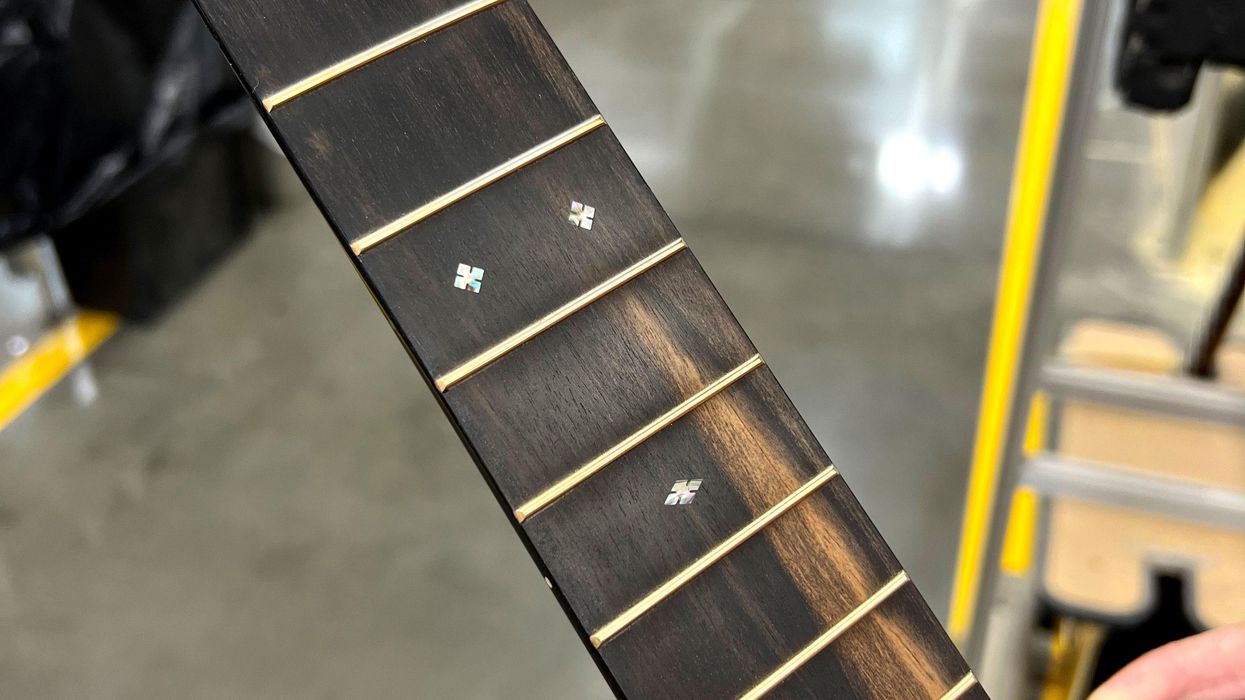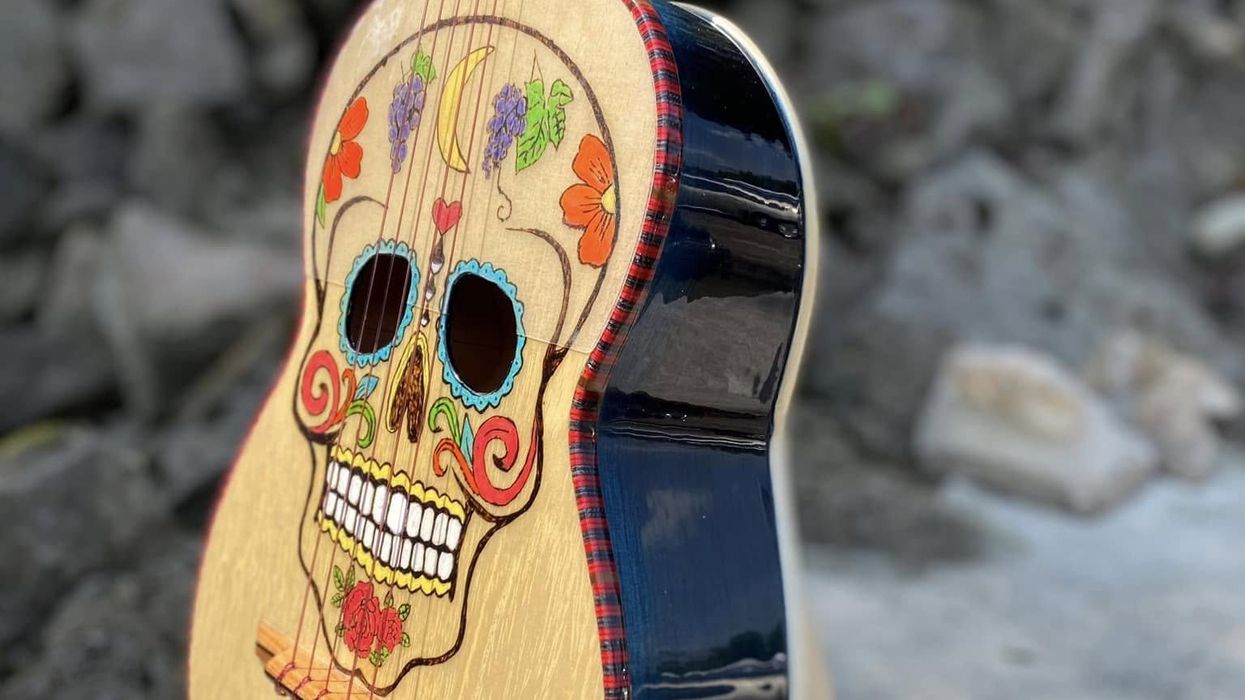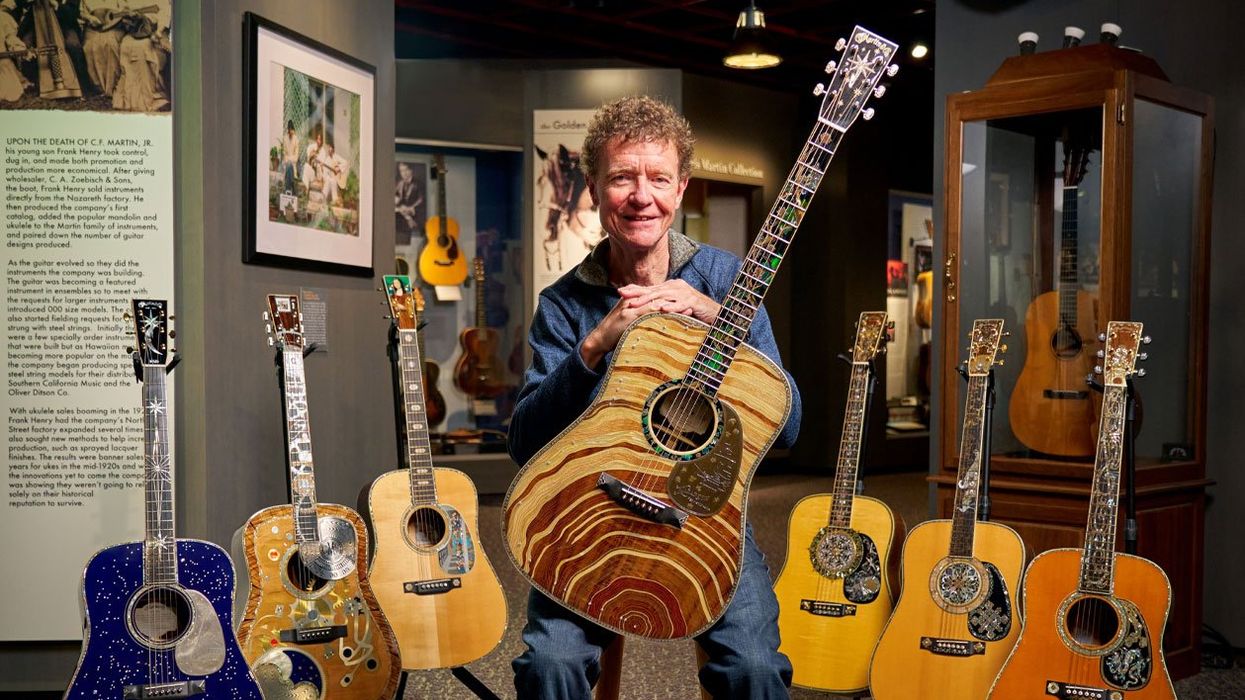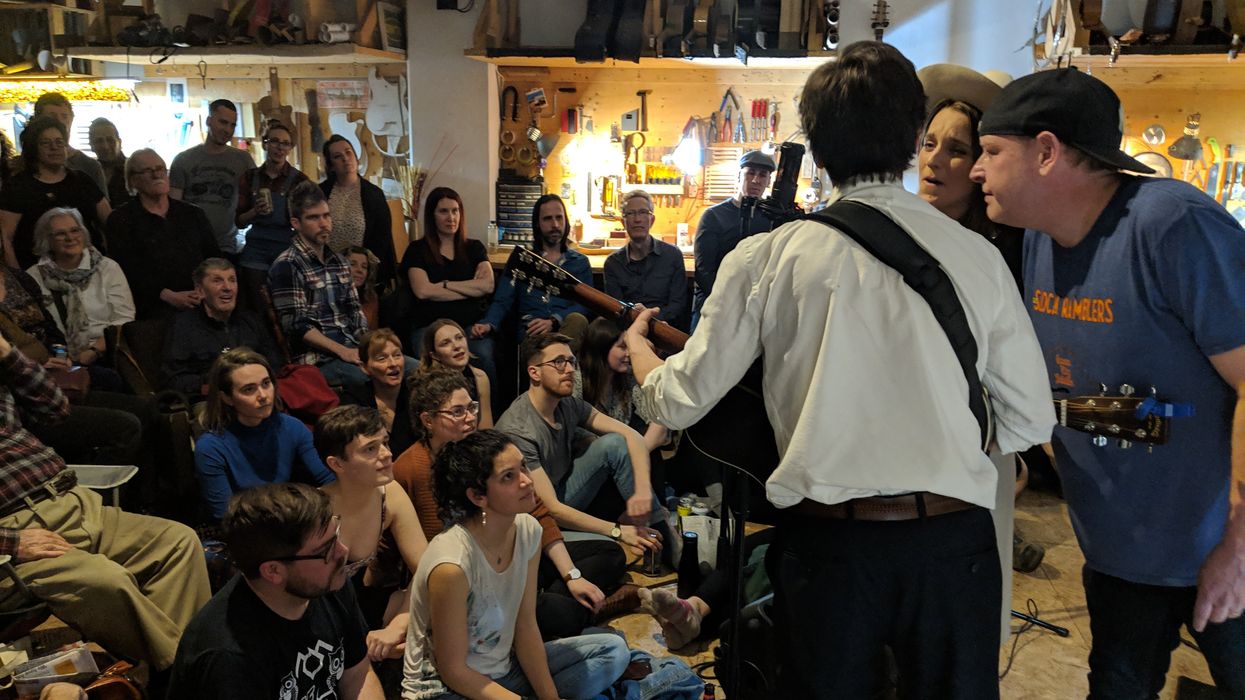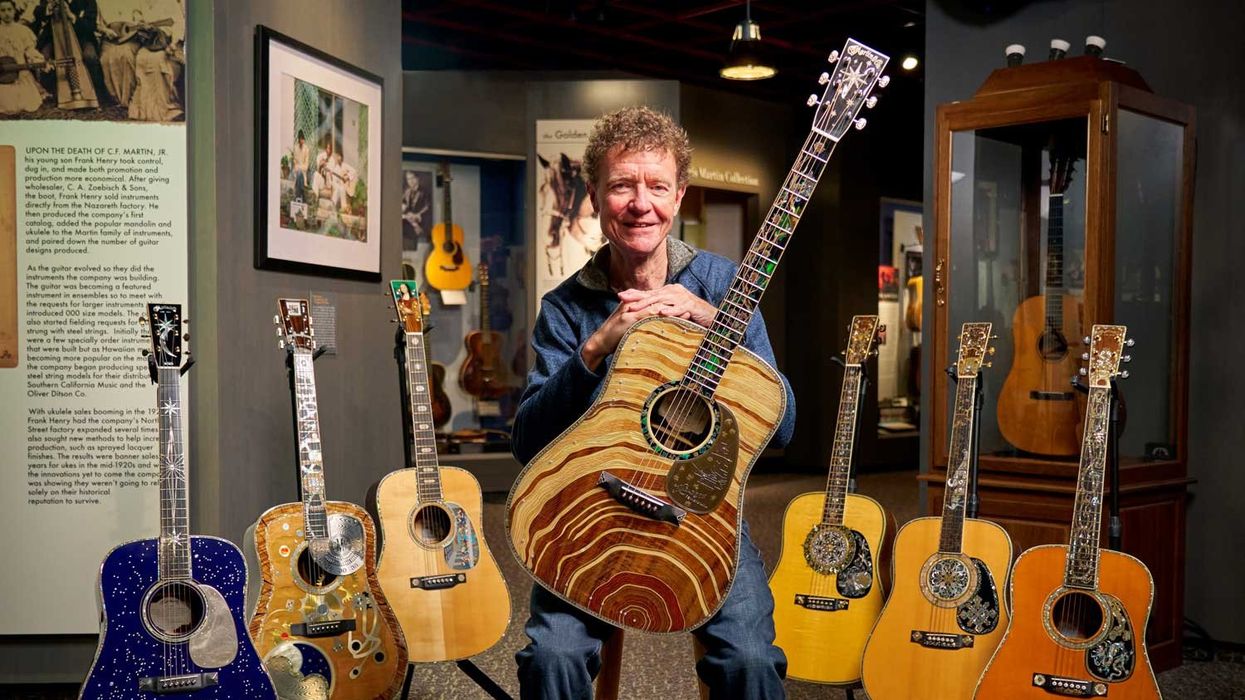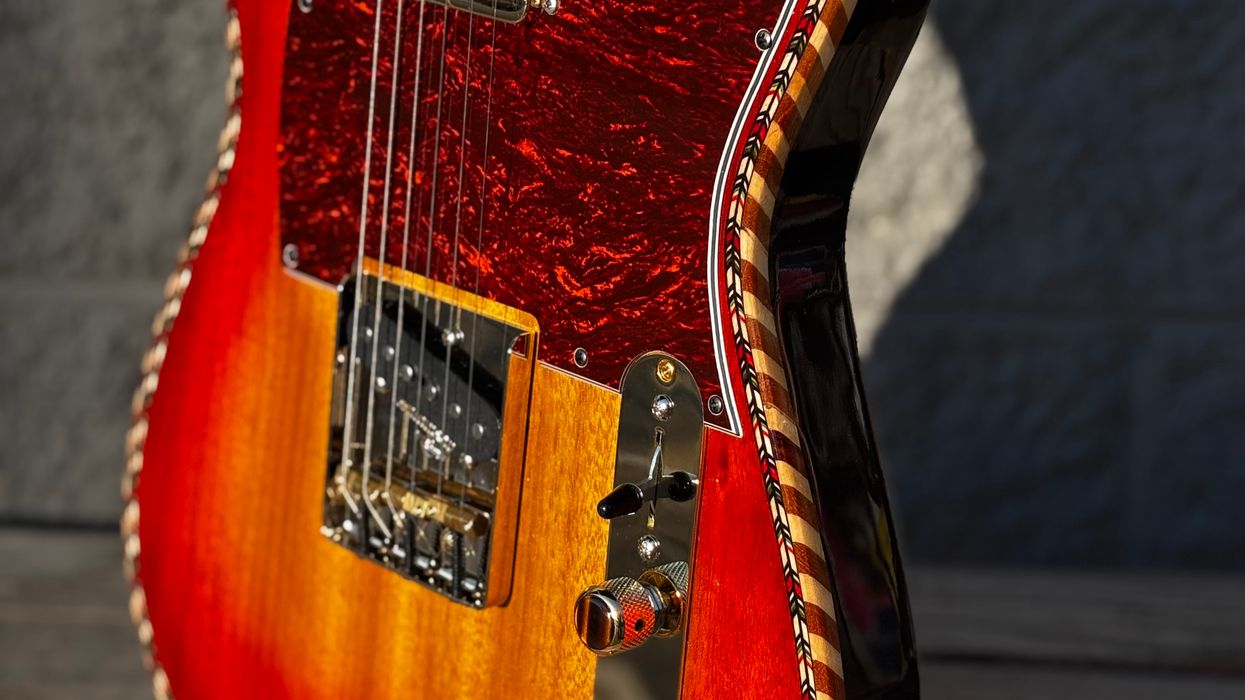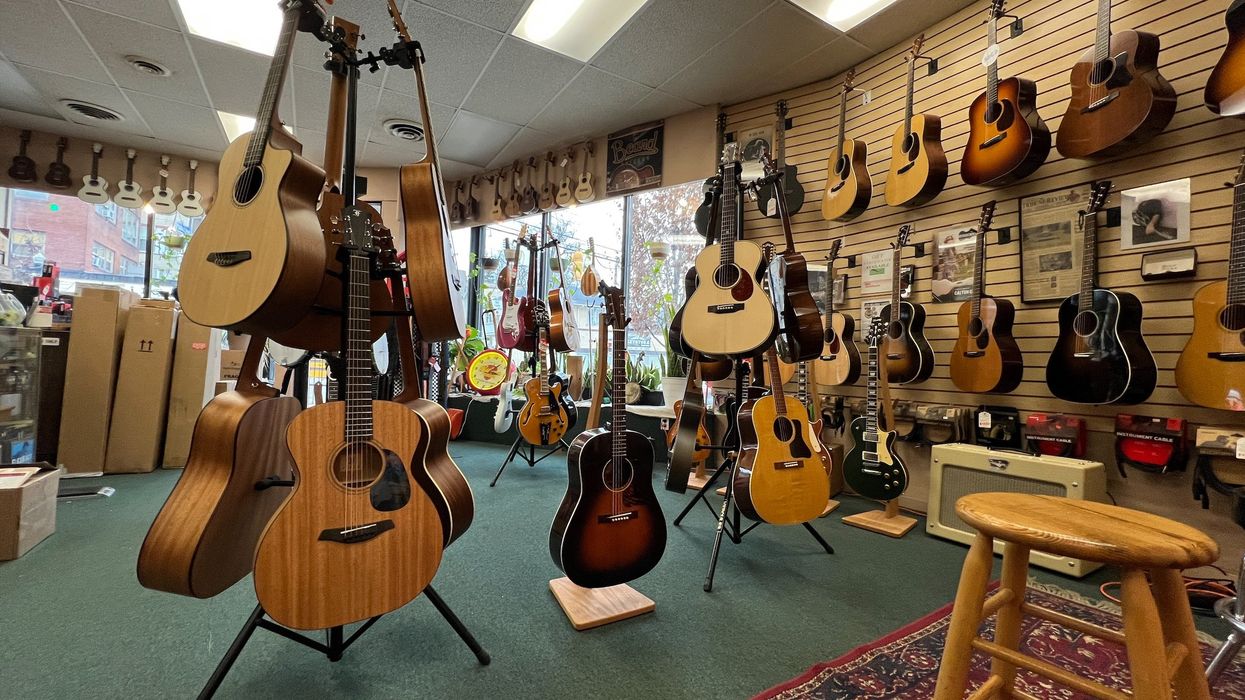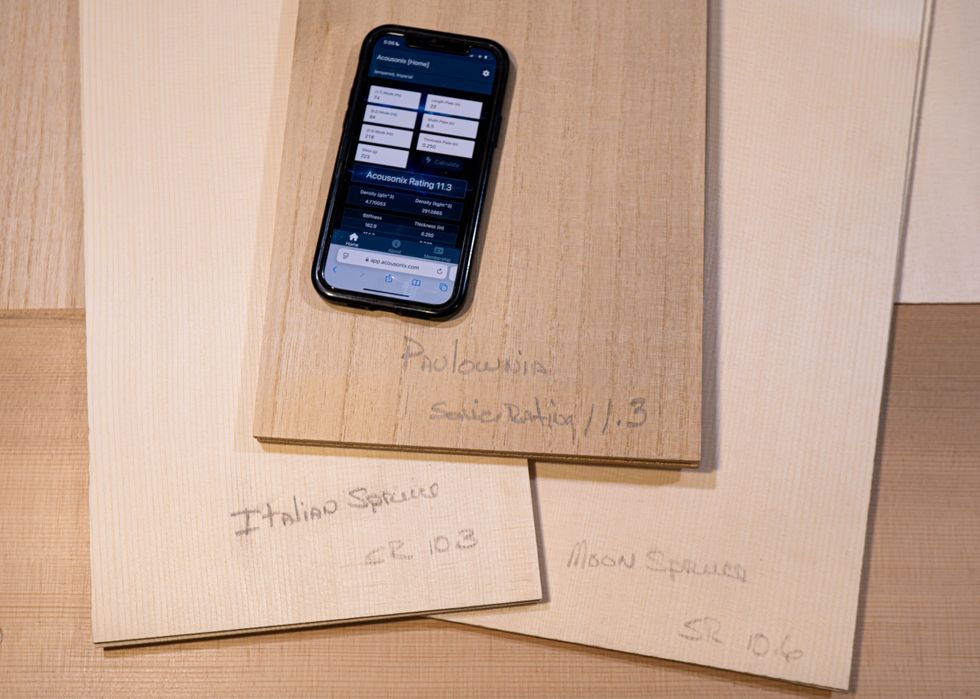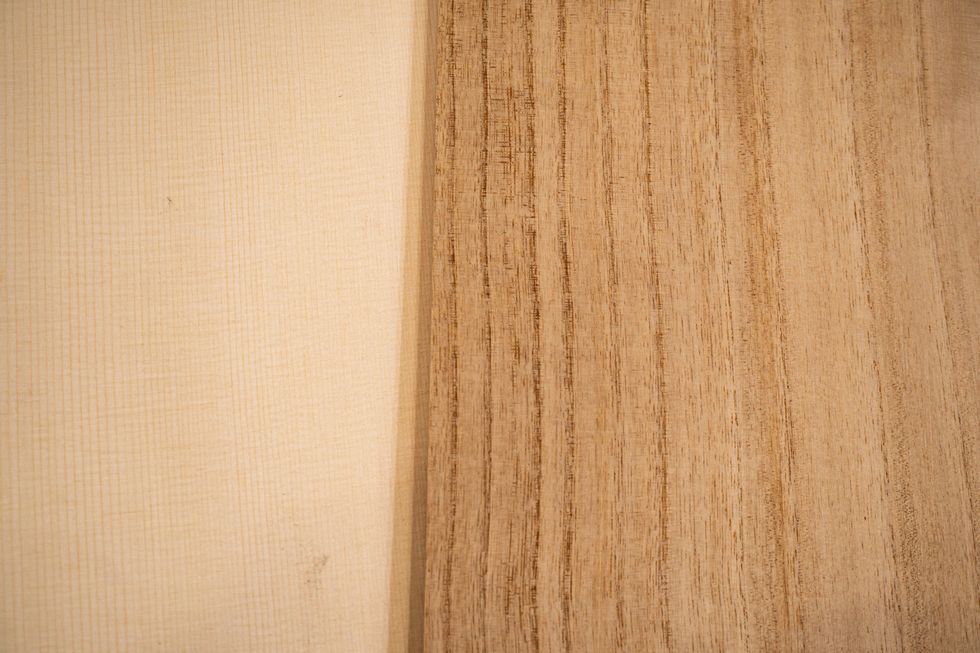For many years, guitar manufacturers had the luxury of not using certain woods if they didn’t like the way they looked. It used to be that if a felled ebony tree was striped, it would be left to rot. Today, that is simply not an option, nor should it be. The choice to use striped ebony in making guitars has become an important one for us at Martin. Striped ebony is an ethically sourced tonewood that sounds great, is aesthetically pleasing, and, perhaps most importantly, is an environmentally smart option.
Some guitarists might be surprised to learn that striped ebony can come from the same genus and species as solid-black African or Gabon ebony, Diospyros crassiflora; the only difference is the streaks in the grain. When it comes to striped ebony, beauty is in the eye of the beholder. We have tried staining it to resemble the jet-black color most guitar players are familiar with, but the stains haven’t proven to be durable—inevitably, the streaks continue to shine through. In comparison to leaving the wood unstained, it just dulls the appearance and is nowhere near as beautiful. So, here at Martin, we are embracing the stripes that give a unique character to each instrument.
While cosmetics are very important, they mean nothing if the guitar’s sound is altered—tone and structure come first. In the case of an ebony fretboard, there is no difference in its contribution to the overall sound whether it is streaked or solid black. Fretboards are an integral part of the guitar’s sound and feel, and ones made of ebony create an excellent attack followed by a long, smooth sustain compared to other fretboard materials, regardless of their outward appearance.
In the case of an ebony fretboard, there is no difference in its contribution to the overall sound, whether it is streaked or solid black.
What makes striped ebony a sustainable option is how the harvesting of it involves the utilization of all parts of the tree. The streaks appear due to the species’ light-colored heartwood; by using the lighter color, we can use more of the harvested wood. Using all color variations allows for more lumber from the tree to be transformed into guitar parts. This keeps the harvesters and mills from scrapping more material and puts more money into their supply chain. Less wood scrapped means fewer trees are cut down.
At Martin, sustainability has been an essential part of our company for over 30 years. Each year, we donate money to programs for replanting trees—not just ebony, but many other species as well. We are currently tracking our carbon footprint and hope to be carbon-neutral in the next few years. For these reasons, we have been using the material Richlite for over 20 years as a sustainable substitution for ebony. It is a composite material that is produced in a carbon-neutral manufacturing facility, that has a consistent black appearance. Another option is katalox, a wood that is similar in density and tonal properties to ebony. It has a color that can range from dark red to deep violet, and is an excellent alternative to African ebony.
I think it is inevitable that all of us who make guitars and use ebony will have to be more judicious about where we use the limited supply of jet-black ebony available on the market today. I want to give Bob Taylor a shout-out for working on sustainable ebony, and hope that we as an industry can all move towards more viable materials.
After all, it may be the answer to an age-old adage: Don’t stripes go with everything?
